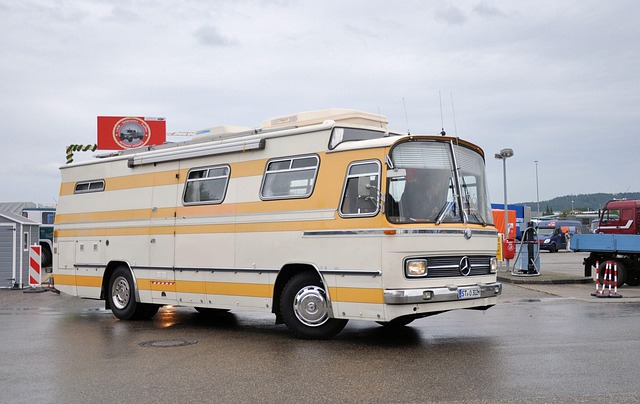Learn how to register your car in California with our comprehensive guide. Understanding the requirements for vehicle registration is key to a smooth process. First, gather essential documents like proof of ownership and insurance. Next, verify your car’s VIN (vehicle identification number) using reliable tools. Complete the California Vehicle Registration Application accurately, ensuring all details are correct. Pay the required fees online or at a DMV office and submit your application. Follow these steps to ensure a seamless registration experience.
- Understand the Requirements for Car Registration in California
- Gather Necessary Documents for Vehicle Registration
- How to Verify a Vehicle's VIN (Vehicle Identification Number)
- Complete the California Vehicle Registration Application
- Pay the Required Fees and Submit Your Application
Understand the Requirements for Car Registration in California

Before registering your car in California, it’s essential to understand the requirements and necessary steps. In California, registration is handled through the Department of Motor Vehicles (DMV), which has strict guidelines for ensuring vehicle safety and identification. One crucial component of this process involves verifying the Vehicle Identification Number (VIN). The VIN acts as a unique fingerprint for your car, providing critical information about its make, model, year, and history.
A mobile VIN verifier can be particularly useful in California, where you may need to demonstrate that your vehicle meets all legal standards before registration. Using a mobile VIN inspection service allows for convenient and efficient verification of your car’s details, often conducted on-site or during an appointment. This is especially beneficial if you’re buying a used car, as it ensures the vehicle’s history aligns with what the seller claims, promoting transparency and safety in California’s automotive landscape.
Gather Necessary Documents for Vehicle Registration

Before registering your car in California, ensure you have all the essential documents ready. This process is crucial to establish ownership and comply with state regulations. Key among these documents is the Vehicle Identification Number (VIN) verifier, which plays a vital role in the registration procedure. The VIN is a unique code that identifies your vehicle, and its verification ensures accuracy during registration.
A mobile VIN inspection or verification service can greatly simplify this process. These services allow you to quickly and conveniently check the VIN’s validity, ensuring it matches the vehicle’s make, model, and year. Having these documents in order will streamline the car registration process in California, making it a seamless experience for new owners.
How to Verify a Vehicle's VIN (Vehicle Identification Number)

Verifying a Vehicle’s VIN (Vehicle Identification Number) is a crucial step in the car registration process in California. The VIN is a unique 17-character code that serves as the identifier for your vehicle, and it’s essential to ensure its accuracy. One effective way to do this is by using a mobile vin inspection service or a vin verifier app, which allows you to cross-reference the number against authoritative databases. These tools can be used on your smartphone, making them convenient and accessible. Simply input the VIN and let the technology verify the vehicle’s history, including any accidents, recalls, or ownership changes, providing peace of mind before registering.
Additionally, California’s Department of Motor Vehicles (DMV) offers a method to check VINs by providing a list of potential issues associated with a specific number. This official vin inspection is a reliable way to ensure the vehicle’s authenticity and condition. By utilizing these modern verification methods, such as mobile vin verifier apps or direct DMV checks, you can confidently navigate the car registration process, knowing that every detail has been scrutinized.
Complete the California Vehicle Registration Application

To begin the registration process, you’ll need to complete the California Vehicle Registration Application. This form requires detailed information about your vehicle, including its make, model, year, and unique identifying number—the VIN (Vehicle Identification Number). The VIN is a crucial piece of data for any vehicle ownership paperwork and can be easily verified using a mobile vin verification or vin inspection service to ensure accuracy.
Make sure all the information on the application is correct and up-to-date. This includes the odometer reading, which is the number of miles shown on your vehicle’s odometer. Once you’ve filled out the form, you’ll be ready to submit it along with the necessary fees and documents to a California Department of Motor Vehicles (DMV) office for final registration.
Pay the Required Fees and Submit Your Application

After completing your vehicle’s inspection and gathering all necessary documents, it’s time to pay the required fees and submit your application for registration. California offers both online and in-person options for this process, allowing you flexibility based on your preference. The fees vary depending on several factors, such as the type of vehicle and whether you’re renewing or transferring ownership. Ensure you have a valid driver’s license and a check or money order for payment to streamline the procedure.
For added convenience, consider utilizing a mobile vin verification service. This innovative approach allows you to complete your VIN (Vehicle Identification Number) inspection remotely, further simplifying the registration process. A mobile vin verifier can validate the vehicle’s history and ensure it meets California’s standards, providing peace of mind before submitting your application.
Registering a car in California involves understanding key requirements, gathering essential documents, verifying your vehicle’s VIN using reliable tools like a VIN verifier, completing an application, and paying associated fees. By adhering to these steps and ensuring all necessary information is accurate, you can successfully register your vehicle, making it legal to drive on California roads.



